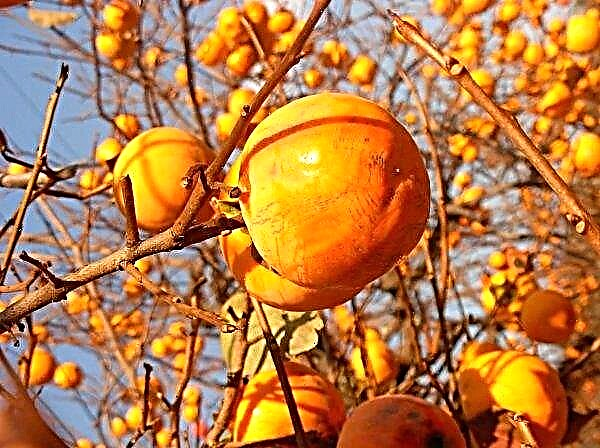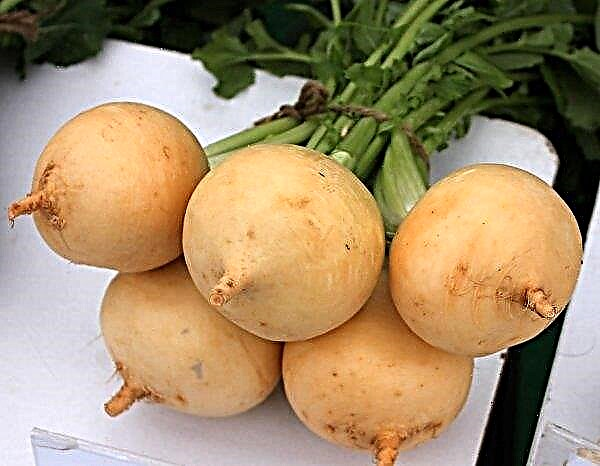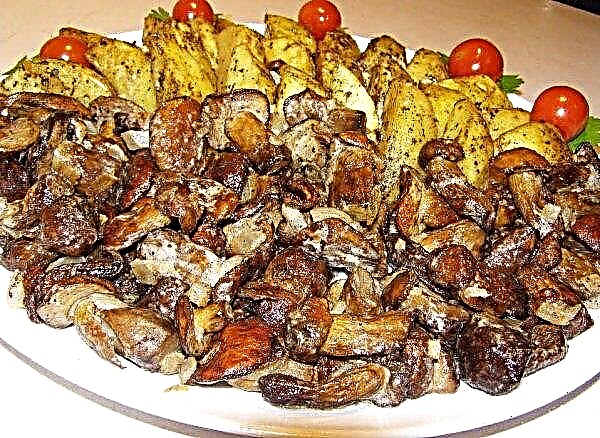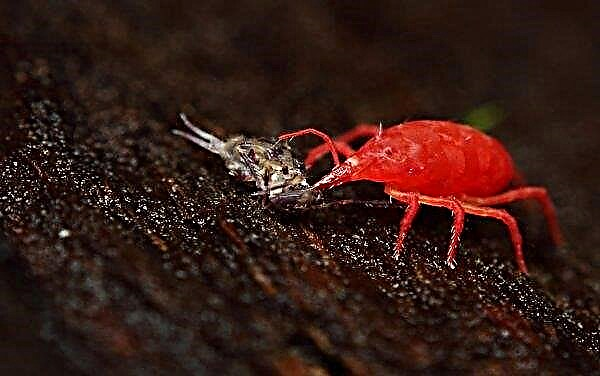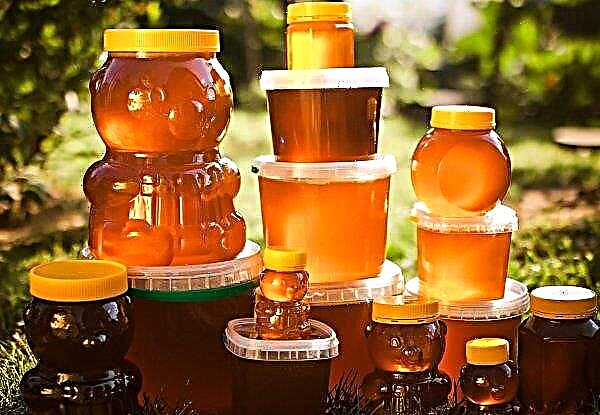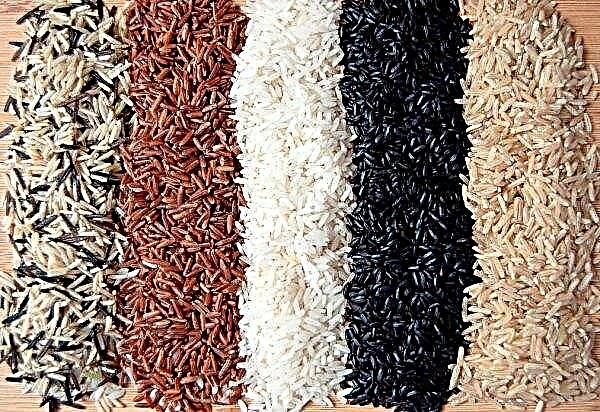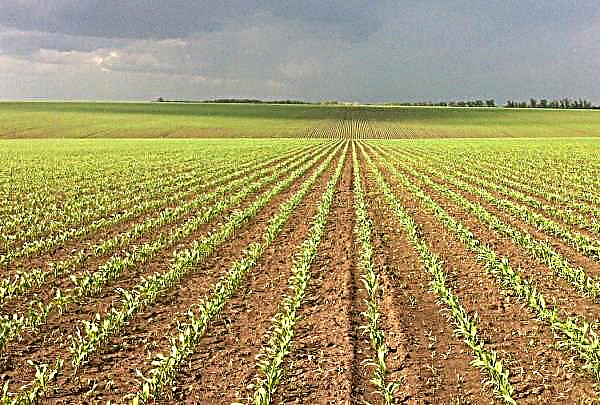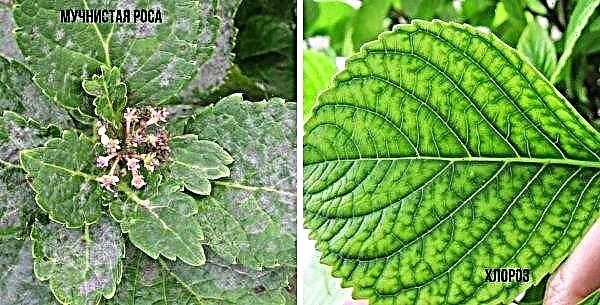High-yielding Red Lady potatoes are in a special place among similar varieties of this crop: it has medium and larger root tubers, with a rather pleasant taste, have a high resistance to diseases and good keeping quality. In the article, we consider the characteristics of this species, the subtleties of planting material planting, and what are the features of growing a crop.
Appearance story
Potatoes Red Lady (Eng. Red Lady) or Red Lady is a breeding product of German scientists from the company Solana. Culture in 2006 successfully passed the test in Russia and Ukraine, after which in 2008 it was introduced to the state registers of these countries. Climatic conditions recommended by breeders for growing Red Lady in our latitudes are the central and southern regions, as well as the Far East and the Caucasus.
Did you know? Potato is considered a conditionally poisonous crop, because its berries are toxic - a person needs only a couple of small potato berries to poison them.
Characteristic features of the variety
Potatoes of this variety have characteristic features:
- early ripening variety - sowing and the appearance of the first crop are shared 60–80 days;
- the variety has a stretched vegetative period of time: tubers are laid in storage after 3 months;
- medium-sized plants, standing upright or semi-upright;
- yield - from 160 to 340 kg / ha;
- under each plant up to 16 potatoes are formed;
- potatoes are oval, large enough, each weighing 155 g; few small non-marketable tubers;
- tubers with reddish skin, on the cut - light yellowish;
- there is a compacted peel that protects the fruits from mechanical damage, due to which it is permissible to transport and store potatoes without loss of commercial quality;
- potatoes have a small number of superficial eyes, which makes it easy to peel tubers;
- starch contents - from 12 to 17%;
- due to its high palatability, a variety of dishes can be prepared from this potato.

Pros and cons of selection
- Pros:
- early ripening and extended vegetative period;
- can be used in industrial and amateur cultivation;
- prepared dishes from the described potatoes have a great taste;
- high resistance to many diseases;
- high content of valuable substances;
- the collected products have good keeping quality and are well preserved during long-term transportation.
- Minuses:
- susceptibility to late blight;
- root tubers are whimsical to the soil composition and its fertility;
- Needs a long daylight for successful cultivation and fruiting.
Did you know? The most expensive potato in the world is considered the variety “La Bonnotte”, which is grown on the island of Noirmoutier. Its cost reaches 500 euros per 1 kg.
Planting potatoes
Red Lady potatoes are planted as early as possible (at the end of March, all of April or in the first decade of May) - this depends on the region and the established high air temperatures, since the land for planting should be well heated (at a steady temperature of +7 ... + 10 ° C). It is also very important to prepare the soil for planting tubers in advance, and then observe the planting technology itself.
Requirements and soil preparation
For the culture of the described variety, soil with good fertility is needed, therefore, before planting planting material, it is necessary to improve the quality of the soil in the allotted land for the crop:
- it is necessary to choose the most light, having a sandy consistency of soil;
- in the spring, after thawing the soil, it is dug up and leveled with a rake;
- to suppress possible soil infections, the soil is recommended to be decontaminated with the “Healthy Land” product (according to the instructions).
Landing technology
Potatoes Red Lady will be able to bring a good harvest, if properly applied the technology of planting seed material:
- Root tubers land in holes excavated from autumn in holes with a depth of 20 cm.
- The distance between the holes is 40 cm, and in the aisles - 60 cm.
- Tubers for planting should be selected weighing about 30 g (this will cause the root system to appear earlier, which is why earlier independent nutrition of young plants is possible).
- Landings are located on a high, well-lit plot.
- The soil should be moderately moist (with high humidity, the potato undergoes rotting or is affected by diseases).
- The root crops are deepened depending on the composition of the soil: with heavy or clayey - tubers are planted to a minimum depth (up to 8 cm); in fertile and light soil, potatoes are placed to a depth of 20 cm.
- After the planting procedure, the earth above the seed material is slightly compacted.
Important! According to varietal description, to obtain an early harvest of Red Lady potatoes root tubers it is recommended to soak in water for 10 hours, after which the planting material will begin to grow faster, and its productivity will increase.
Features of care and fertilizer
Even before planting, in the pre-winter period, organic fertilizers are applied to the soil (optional):
- compost - 5 kg per 1 m²;
- rotted manure - 10 kg per 1 m²;
- ammonium nitrate (20 g) + potassium sulfate (20 g);
- humus (8 kg) + nitrophoska (3 tbsp.) + ash (200 ml);
- humus (10 kg) + ammonium nitrate (25 g) + potassium sulfate (25 g) + superphosphate (25 g) + dolomite flour (400 g);
- when planting in holes, you can throw a handful of wood ash;
- ready-made complex fertilizers ("Kemira", "Giant", "Bulba").

Weed cleaning
In order for the fertility of the soil in which the Red Lady variety grows to remain high, regular weeding of the weeds is necessary on the site. This procedure can be combined with loosening the soil, which will contribute to good air exchange on the plantation and the preservation of useful components for the crop. The same weed is allowed to mulch the soil around the plants to preserve moisture. Hilling of bushes is also necessary.
For the first time, potatoes are spudded after growing bushes up to 20 cm, the next time after a week. Hilling is recommended the next day after watering or rains. This is necessary to ensure that the bushes breathe well, develop sufficiently and for the formation of many underground shoots (this will increase the yield by 25-30%). If there is a threat of frost, small shoots are completely covered with earth.
Watering
Potato stands are watered in the evening using the following technology:
- for the first time - when shoots appear;
- the next watering is carried out during flowering;
- the third time - after flowering.
 A sufficient amount of fluid for each plant is at least 5 liters. Water is served by pouring under each plant or between beds.
A sufficient amount of fluid for each plant is at least 5 liters. Water is served by pouring under each plant or between beds.Pest and Disease Control
Although Red Lady's potatoes are very resistant to many diseases and harmful insects, inaccuracies in the growing process lead to some problems.
Important! When working with fungicides or insecticides to eliminate problems in potatoes, it is mandatory to use protective equipment in the form of gloves and a respirator.
Among them:
- Phytophthora. For prophylactic purposes, potato plantations are treated up to 5 times (after 10 days) with fungicides Acrobat MC (40 g per 10 l of water), Ecopin (1 g per 10 l of water), Fitosporin-M (1 st l. to 10 liters of water). When infected with late blight, all affected foliage is destroyed, and the bushes are treated with Oxychom or Ridomil MC chemicals (it is permissible to process it several times with an interval of 2 weeks).
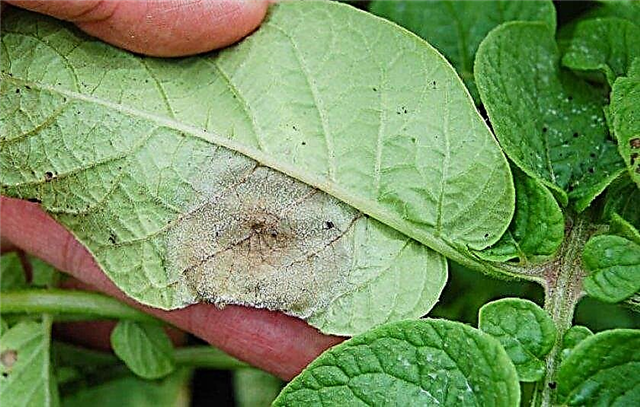
- Scab. Fungal infection of the underground parts of the bushes, which can change the taste of tubers and is reflected in their poor keeping quality. In order to control the use of sulfate fertilizers, as well as compliance with crop rotation rules.
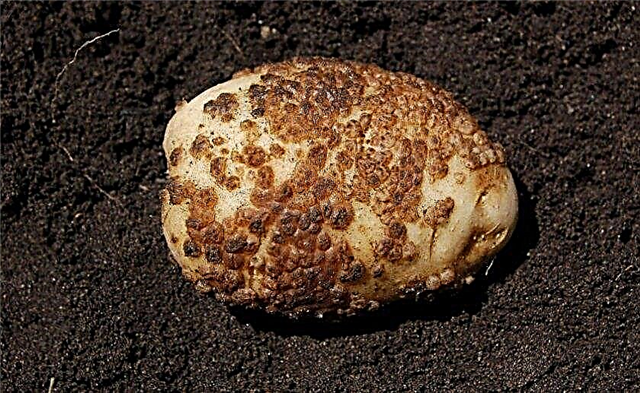
- Colorado potato beetle and its larvae. The treatment is carried out with “Aktara” insecticides (used before flowering, when the first sprouts appear), “Actellik”, “Fitoverm”, “Colorado” (several sprayings are allowed for the season, but no later than 3 weeks before harvesting potatoes); "Confidor Maxi (Extra)" (according to the instructions).
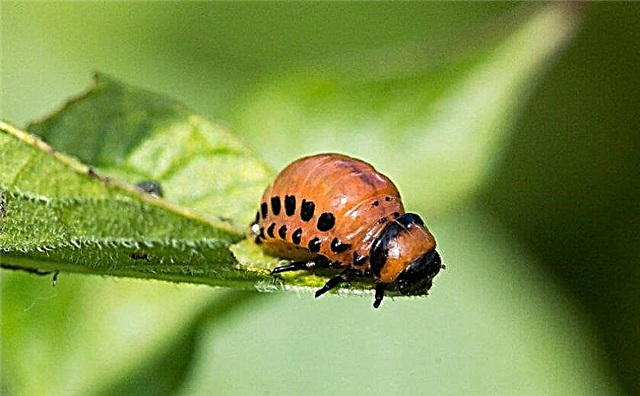
Harvesting and storage methods
Potatoes Red Lady has its own nuances of harvesting and storage:
- The shelf life of the harvested products will be high (up to 92%) only if the potatoes were dug up on time - they choose dry weather, and then dry it well enough, not giving in to direct sunlight.
- Only whole, disease-free tubers are stored in the storage. Cut tubers, as well as those affected by diseases or pests, are selected separately for primary consumption, since such potatoes will not lie for long.
- You can not wash off the rest of the earth from the peel, otherwise excess moisture will contribute to decay of the crop. It is better to carefully clean the dirt by mechanical means (wipe with a rag or soft brush).
- Sorted products are distributed in boxes with slots or placed in baskets.
- The potato is recorded in a cool store (from + 1 ° C to + 4 ° C) at a humidity of 80%.
By organizing Red Lady potatoes of all the necessary conditions for planting, care and preservation of the crop, the products will be able to lie down until the spring almost without sprouting and spoilage. And also it will help the potato to maintain all its high taste and contribute to the long-term transportation of tubers.




